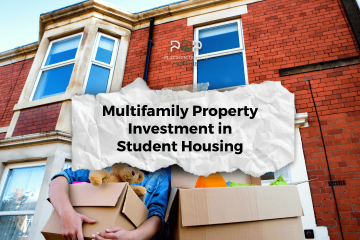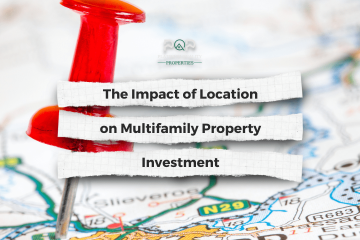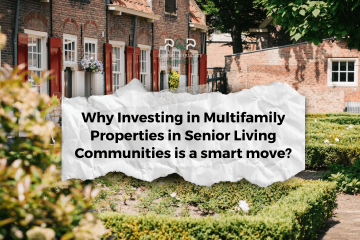Despite ongoing challenges, economists speaking at the International Builders’ Show in Orlando, Fla., anticipate a positive 2022 for the apartment sector. “Last year was red hot for multifamily, and we see that trend continuing,” said Dean Schwanke, vice president, multifamily housing, NAHB.
In 2022 NAHB anticipates that multifamily starts, fueled by low vacancies and rising rents, will rise 6.3 percent from 2021 to about 496,000 units. Boosted by stronger multifamily growth, overall housing production is expected to rise 2.5 percent this year to a 1.63 million annual pace. Meanwhile, sales of new single-family homes are projected to total 830,000 in 2022, up 9.3 percent from last year.
Single-family builders and multifamily developers alike will continue to grapple with ongoing building material production bottlenecks and labor shortages that will limit the pace of construction and keep upward pressure on home and rental prices.
“We are estimating that there needs to be around 61,000 new construction hires every month in order to keep up with the industry growth,” according to Danushka Nanayakkara-Skillington, assistant vice president for forecasting and analysis, NAHB.
“It’s an aging labor force,” said Nanayakkara-Skillington. “We need to attract young people to come into the trades in the next couple of years and some sort of sensible bipartisan immigration policies to attract new workers into the country as well. Hopefully we can figure this out before it becomes a persistent issue in industry.”
Another challenge is the aggregate cost of building materials which is up 21 percent year over year. Nanayakkara-Skillington noted that the lumber price increase is adding $7,300 per apartment—and $18,600 per single-family home. Also, gypsum prices are up 21 percent in the last 12 months, steel prices have increased 127 percent since December 2020 and aluminum prices are up 63 percent.
Builder Sentiment Rises
According to the NAHB Multifamily Production Index, which gauges the sentiment of builders in the apartment market, builders are seeing conditions improve. “They are feeling optimistic about the multifamily market. Looking at multifamily construction starts, we thought 2019 was the peak of the cycle, but 2021 looks to have had almost 467,000 multifamily units. It’s up 19 percent compared to 2020 and 2022,” said Nanayakkara-Skillington.
“We are expecting almost half a million units and 6 percent growth. These are incredible numbers. By 2023 we anticipate it will flatten, but we still forecast approximately 488,000 multifamily units. This is a really strong market. Multifamily has definitely recovered compared to single-family.”
The 10 largest multifamily markets buying permits are New York, Dallas, Austin, Seattle, Los Angeles, Denver, Philadelphia, Phoenix, Miami and Houston.
“A lot of people are asking me about build-for-rent,” added Nanayakkara-Skillington. “In 2020, build-for-rent made up only 4.5 percent of market share, but we think there is a lot of growth in this area. The last quarter was the best quarter on record for single-family build-for-rent. Last quarter 16,000 starts were recorded. We don’t have enough housing in the single-family market. There’s a housing deficit. So single-family build-for-rent is a great option.”
2021 a Record Year
Selma Hepp, PhD, deputy chief economist, CoreLogic, agrees that multifamily is one of the most robust sectors at the moment. “Tucson, Phoenix and Las Vegas are three markets where I’ve seen the strongest multifamily rents,” she said. Prior to the pandemic, multifamily rent had been growing at about 5 percent and was outperforming single-family rentals both detached and attached, according to Hepp.
“As the pandemic started, you could see this huge dip in multifamily rents which lasted about the duration of 2020 but has since rebounded. It has rebounded so strong that it’s now outpacing rents for single-family detached or attached.”
Hepp also noted that the apartment price index rose 24 percent year-over-year which was a record for the sector. Falling mortgage rates helped boost prices and pushed down cap rates.
“We’ve seen apartment cap rates fall to a new low of 4.5 percent in December 2021,” said Hepp. “This is a 10 percent decline from the third quarter of 2021, and cap rates were down 10 percent on a year-over-year basis. If you think about what happened in 2020, that’s when they dropped as a result of the pandemic; but now they’re even lower at 4.5 percent.”
Cap rates are lowest in the markets with highest population growth such as Texas, Arizona, Utah and Idaho. Looking at the population growth forecast, Hepp says there have been few changes in the last 10 years. Hepp said that Florida, North Carolina, South Carolina, Georgia and states in the western mountain region will see the most population growth and rental and single-family price growth going forward.
“Focusing on the population of folks between ages 20 to 29, we will see the largest increases over the next 10 years in Idaho, Utah, Florida, Arizona and Texas,” Hepp added. “These are the states that have done the best in any index for housing market performance.”
Unfortunately, some of those areas where population growth is expected to be highest are also areas at high risk of natural hazards.
The Joint Center for Housing Studies has done an analysis looking at high risk areas which are measured by expected annual loss in average dollars. They found that rental units are at most risk of natural disasters along the west coast and some of the Gulf coast regions. “Florida is prone to hurricanes, and unfortunately with a lot of people coming in, we do have to keep in mind that this is an area with a high level of threat of natural disasters.”
Despite environmental and supply side challenges, multifamily investors who navigate potential roadblocks will do well in 2022’s strong apartment market.




